From lower tax rates to new deductions for pass-through income, the revised tax laws may mean more cash in your pocket. Here are some tax planning opportunities you can take advantage of before year-end.
New Standard Deduction versus Itemized Deductions
For 2018, the new standard deductions are as follows:
- Married couples filing jointly – $24,000
- Head of households – $18,000
- Singles/ Married Filing Separate – $12,000
If you typically claim the standard deduction (as opposed to itemizing deductions), chances are your tax bill will decrease for 2018. Although personal exemption deductions are no longer available, a larger standard deduction, combined with lower tax rates and an increased child tax credit (see later discussion), may result in less taxes. However, if you usually itemize deductions, the larger standard deduction may change this and also limit how many of the itemized deductions you are able to make. We are available to analyze your particular tax situation to determine if you will pay more or less under the TCJA.
*Note: Depending on your circumstances, we may need to adjust your estimated quarterly tax payments. Also, this is a good time to check if you’re on track to have the right amount of federal income tax withheld from your paychecks in 2018. You can correct any discrepancies by turning in a new Form W-4 (Employee’s Withholding Allowance Certificate) to your employer.
Maximize Home Mortgage Interest Deductions
Before the TCJA, taxpayers could deduct interest paid on up to $1 million ($500,000 if married filing separately) of home acquisition debt (debt used to buy or substantially improve a first or second home). Also, taxpayers could deduct interest paid on up to $100,000 ($50,000 if married filing separately) of home equity debt, regardless of how the proceeds were used. The TCJA cuts those numbers back significantly.
For 2018–2025, the TCJA reduces the limit on home acquisition debt to $750,000. For married taxpayers filing separately, the debt limit is halved to $375,000. Also, the TCJA generally disallows home equity debt interest. However, the IRS recently advised homeowners that interest paid on home equity loans and lines of credit may be deductible if the funds are used to buy, build, or substantially improve the taxpayer’s home that secures the loan. In other words, such loans will be treated as home acquisition debt subject to the new $750,000/$375,000 limits.
Thanks to a set of grandfather rules, the new limits don’t apply to home acquisition debt that was taken out on or before 12/15/17 (or taken out on or before that date and refinanced later). This is good news for existing homeowners. However, if you have a home equity loan or line of credit, we will need to trace how the proceeds were used to determine if the interest is still deductible under the new law.
In addition, it may be beneficial to refinance your home using an interest-only mortgage. For example, if you refinance $1 million of pre-TCJA home acquisition debt with a new $1 million interest-only loan, you can continue to deduct all the interest under the grandfather rules. In contrast, if you gradually make principal payments on your $1 million of pre-TCJA home acquisition debt, you won’t be able to treat any portion of an additional home loan taken in 2018–2025 as home acquisition debt because your existing loan will absorb the entire $750,000 TCJA limit.
Take Advantage of the New Child Tax Credit
Under pre-TCJA law, the child tax credit was $1,000 per qualifying child, but it was reduced for married couples filing jointly by $50 for every $1,000 (or part of $1,000) by which their Adjusted Gross Income (AGI) exceeded $110,000. (The threshold was $55,000 for married couples filing separately and $75,000 for unmarried taxpayers.)
Starting in 2018, the TCJA doubles the child tax credit to $2,000 per qualifying child under age 17. It also allows a new $500 credit (per dependent) for any of your dependents who aren’t qualifying children under 17. There is no age limit for the $500 credit, but the tax tests for dependency must be met.
The TCJA also substantially increases the “phase-out” thresholds for the credit. Starting in 2018, the total credit amount allowed for a married couple filing jointly is reduced by $50 for every $1,000 (or part of $1,000) by which their AGI exceeds $400,000. The threshold is $200,000 for all other taxpayers. So, if you were previously prohibited from taking the credit because your AGI was too high, you may now be eligible to claim the credit.
Take Advantage of Lower Tax Rates and Investment Gains
Under the TCJA, 2018 ordinary tax rates are generally lower than those for 2017. For example, the top rate has been reduced from 39.6% to 37%. (The remaining six rates are 10%, 12%, 22%, 24%, 32%, and 35%.) Also, the top rate now applies to joint filers whose taxable income is over $600,000 (as opposed to $470,700 for 2017). Some taxpayers who were taxed at 39.6% in 2017 may now find themselves in the 35% tax bracket.
In other good news, the TCJA didn’t change the capital gains rate structure. Therefore, most categories of long-term capital gain are taxed at 0%, 15%, or 20%. The maximum 20% rate applies to joint filers with 2018 taxable income (including long-term gains) above $479,000. Higher- income individuals also can be hit with the 3.8% Net Investment Income Tax (NIIT). The bottom line is that taxpayers falling outside of the top ordinary tax bracket of 37% can be subject to the maximum capital gains rate of 20%.
As you evaluate investments held in your taxable brokerage firm accounts, consider the tax impact of selling appreciated securities (currently worth more than you paid for them) before the end of this year. For most taxpayers, the tax rate on long-term capital gains is still much lower than the rate on short-term gains. Therefore, it often makes sense to hold appreciated securities for at least a year and a day before selling to qualify for the lower long-term gain tax rate.
Also, taxpayers who expect to be subject to a higher capital gain rate after 2018 should consider selling profitable long-term investments in 2018 to take advantage of this year’s rate. The proceeds and tax savings could be used to help fund a traditional IRA (possibly deductible) or Roth IRA to postpone or eliminate future taxes.
Bunch Charitable Contributions through Donor-advised Funds
The TCJA temporarily increases the limit on cash contributions to public charities and certain private foundations from 50% to 60% of AGI. However, as we mentioned earlier, the standard deduction has almost doubled. Combined with the capping of the state and local tax deduction at $10,000 per year ($5,000 for a married taxpayer filing a separate return), changes to the home mortgage interest deduction, and the elimination of miscellaneous itemized deductions, it’s likely that fewer taxpayers will be itemizing in 2018.
One way to combat this is to bunch or increase charitable contributions in alternating years. This may be accomplished by donating to donor- advised funds. Also known as charitable gift funds or philanthropic funds, donor-advised funds allow donors to make a charitable contribution to a specific public charity or community foundation that uses the assets to establish a separate fund. Taxpayers can claim the charitable tax deduction in the year they fund the donor-advised fund and schedule grants over the next two years or other multiyear periods. This strategy provides a tax deduction when the donor is at a higher marginal tax rate while actual payouts from the account can be deferred until later. If you have questions or want more information on donor-advised funds, please give us a call. We welcome the opportunity to help you put together a charitable giving plan that suits your goals.
Revisit Your Qualified Tuition Plans
Although the details of Qualified Tuition Plans (QTPs) can vary widely, they generally allow parents and grandparents to set up college accounts for children and grandchildren before they reach college age. Once established, QTPs qualify for favorable federal (and often state) tax benefits, which can ease the financial burden of paying for college. QTPs may be particularly attractive to higher income parents and grandparents because there are no AGI-based limits on who can contribute to these plans.
Under pre-TCJA law, the earnings on funds in a QTP could be withdrawn tax-free only if used for qualified higher education at eligible schools. Eligible schools included colleges, universities, vocational schools, or other postsecondary schools eligible to participate in a student aid program of the Department of Education. Thanks to the TCJA, qualified higher education expenses now include tuition at an elementary or secondary public, private, or religious school, up to a $10,000 limit per tax year. So, you may want to revisit your QTPs if you have children or grandchildren who attend elementary or secondary schools.
Watch out for New Alimony Rules
Under the TCJA, certain future alimony payments will no longer be deductible by the payer. Also, alimony will no longer be considered income to the recipient. Therefore, for divorces and legal separations that are executed (that come into legal existence due to a court order) after 2018, the alimony-paying spouse won’t be able to deduct the payments, and the alimony-receiving spouse doesn’t include them in gross income or pay federal income tax on them.
It’s important to emphasize that pre-TCJA rules apply to already-existing divorces and separations, as well as divorces and separations that are executed before 2019. However, under a special rule, if taxpayers have an existing (pre-2019) divorce or separation decree, and they have that agreement legally modified, then the new rules don’t apply to that modified decree unless the modification expressly provides that the TCJA rules are to apply. There may be situations where applying the TCJA rules voluntarily is beneficial for the taxpayers, such as a change in the income levels of the alimony payer or the alimony recipient. If you’re considering a divorce or separation (or modification of an existing divorce decree), please let us know so we can determine the tax consequences.
Consider Investing in Qualified Opportunity Zones
Tucked away in the TCJA is the creation of Qualified Opportunity Zones (QO Zones). These are low-income communities that meet certain requirements. Investing in QO Zones can result in two major tax breaks: (1) temporary deferral of gain from the sale of property and (2) permanent exclusion of post-acquisition capital gains on the disposition of investments in QO Zones held for ten years.
The IRS has already announced the designation of QO Zones in over 20 states and U.S. possessions. It will make future designations as submissions by states are received and certified. The IRS also plans to issue additional information on QO Zones in the future. If you’re looking to defer taxable gains while revitalizing low-income communities, QO Zones may be the way to go.
Monitor State Response to Tax Reform
States react differently to changes to federal tax law. For example, some states automatically conform to federal tax law as soon as legislation is passed. Other states require their legislatures to adopt federal tax law as of a fixed date. This generally occurs on an annual basis. There are some states, however, that pick and choose which federal provisions to adopt. Because of this, your state income tax rules may be drastically different than the federal income tax rules. For example, you may be better off claiming the standard deduction for federal tax purposes but itemizing for state income tax purposes. We have monitored your state’s response to the TCJA and will help you minimize your state income tax bill.
Beware of the Alternative Minimum Tax
As tax reform efforts progressed late last year, there were high hopes that the individual Alternative Minimum Tax (AMT) would be repealed. Unfortunately, it still exists under the TCJA. The good news is that you are allowed a relatively generous AMT exemption, which is deducted in calculating your AMT income. The TCJA significantly increases the AMT exemptions for 2018–2025. The exemption is phased out when your AMT income surpasses the applicable threshold, but the TCJA greatly increases those thresholds for 2018–2025. This means that less people will be subject to the AMT rules.
Maximize Your Qualified Business Income Deduction
You may have heard a lot of talk in the news about a new deduction for “pass-through” income, but it’s actually available for qualified business income from a sole proprietorship (including a farm), as well as from pass-through entities such as partnerships, LLCs, and S corporations. Under the TCJA, individuals may deduct up to 20% of their qualified business income; however, the deduction is subject to various rules and limitations.
Although there is some uncertainty surrounding this new deduction, there are some planning strategies we can consider. For example, there are ways to adjust your business’s W-2 wages to maximize your qualified business income deduction. Also, it may be helpful to convert your independent contractors to employees, assuming the benefit of the deduction outweighs the increased payroll tax burden. Other planning strategies include investing in short-lived depreciable assets, restructuring the business, and leasing or selling property between businesses. We will work with you to determine which strategies produce the best outcome.
Conclusion
It is a unique year given the various changes brought by the TCJA. Our team can help determine which approach produces the right outcome to achieve your goals. Do not hesitate to contact us if you would like to schedule a tax planning session.




